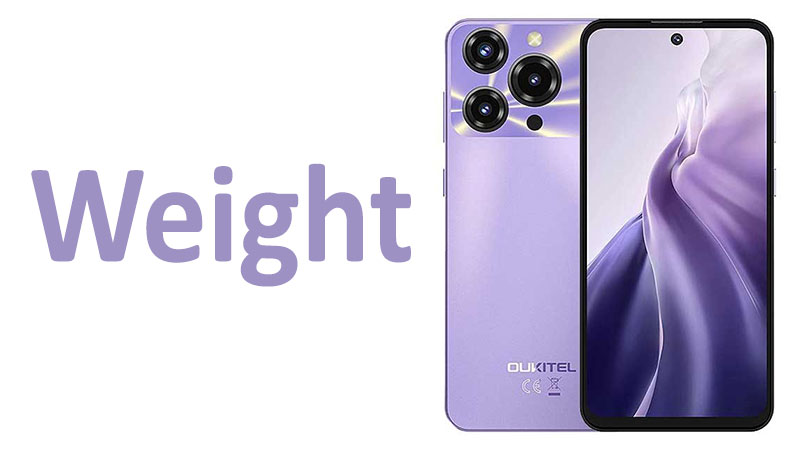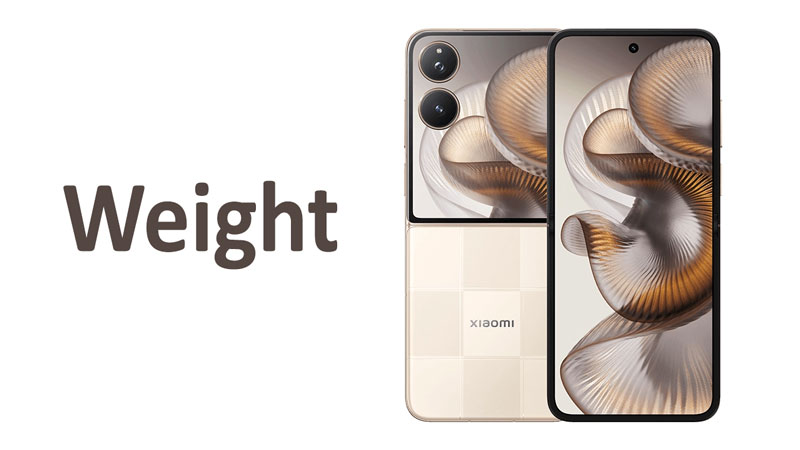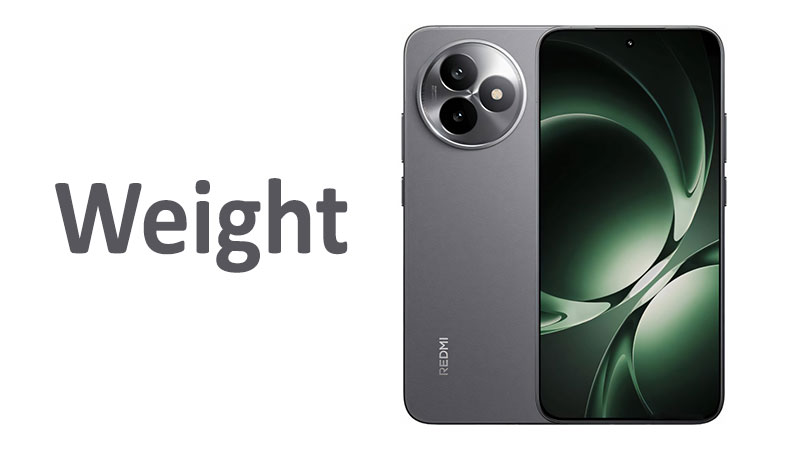The Oukitel C69 weight immediately signals a key feature of the device. It significantly impacts how users carry and interact with their phone daily. The confirmed mass for this particular model is 243 grams. This high number places the phone in the heavier category of modern smartphones. It suggests a device built for durability, longevity, or both. The weight of 243g also converts precisely to 8.57 ounces. Understanding this heavy specification is vital for consumers. It helps them accurately assess the phone’s ergonomic trade-offs and physical design. This comprehensive article delves into every facet of the Oukitel C69’s weight. We explore its design implications, compare it to various market segments, and analyze its influence on the user experience.
Technical Weight Breakdown: 243 Grams and 8.57 Ounces
The exact mass of the Oukitel C69 is a deliberate, engineered specification. The total weight stands at exactly 243 grams. This figure accounts for the entire device assembly. It includes the chassis, the large display, the internal power cell, and all electronic components. The significant number reflects Oukitel’s focus on power and resilience. They prioritized a robust build over maximum portability.
Decoding the 243 Gram Mark
The 243-gram figure is a psychological and practical boundary. It crosses the commonly accepted 200-gram threshold for light phones. A device weighing over 240g is consistently perceived as heavy. This heaviness is immediately noticeable upon first pickup. The high mass is a strong indicator of specific design choices. Oukitel likely incorporated a much larger battery cell. They also probably used more protective, denser materials for the casing.
Furthermore, this weight suggests robust component sizes. For instance, the battery capacity is almost certainly massive. The phone likely includes additional structural bracing or ruggedization features. Overall, the 243g weight confirms the C69’s focus on endurance. It prioritizes long runtime and protection over a slim, feather-light feel.
Exact Gram-to-Ounce Conversion
The metric measurement of 243 grams translates to 8.57 ounces. This imperial weight provides necessary context for international markets. It allows customers using imperial units to quickly gauge the phone’s physical heft. Since one ounce is about 28.35 grams, the 8.57 oz figure is the accurate imperial mass.
The 8.57 ounces weight makes the phone feel substantial and weighty. This heavy feel may contribute to a perception of ruggedness. It is definitely beneficial for power users seeking maximum battery life. Most users will recognize this weight difference instantly. The phone possesses a heavy, firm sensation associated with tough devices.
The Context of Sub-250g Devices
The Oukitel C69 sits just under the 250-gram mark. While heavy, this placement is intentional. Many truly rugged, hyper-durable smartphones weigh far more. These specialized devices can easily exceed 300 grams. Therefore, 243g suggests a hybrid design philosophy. Oukitel aims for excellent durability and battery life. However, they keep the mass below the extremely heavy industrial level.
The weight profile targets users who need enhanced battery life. They also want more resilience than a standard phone offers. The 243g mass is a significant characteristic. It defines the phone’s position as a durable, long-lasting device. This weight ensures key trade-offs are accepted for core benefits.
Engineering and Design Factors Influencing Mass
The final Oukitel C69 weight of 243 grams is the direct result of significant engineering commitments. The choice of internal components and casing materials determines this high mass. Oukitel selected parts to meet the weight target indicative of high performance. This section details how key elements contribute to the phone’s overall substantial mass.
The Critical Role of the High-Capacity Battery
The battery is almost always the heaviest single item inside a smartphone. The 243g weight is a clear indicator of a high-capacity power cell. The C69 likely features a battery capacity of 6,000mAh or potentially even more. This large cell size is directly responsible for the increased weight. It also provides the phone’s primary selling point: phenomenal endurance.
If Oukitel had opted for a standard 4,500mAh battery, the device would be lighter. It would likely sit closer to 180 or 190 grams. Therefore, the extra 50 to 60 grams are the price of multi-day battery life. The user directly translates this extra mass into charging freedom. The large battery is the most significant contributor to the Oukitel C69 weight.
Chassis, Materials, and Ruggedization
The structural materials chosen for the Oukitel C69 also contribute substantially to its mass. The phone likely utilizes a denser frame than standard mid-range devices. This heavy-duty frame provides crucial protection. It is essential for surviving drops and impacts.
The casing may incorporate hardened plastics or specialized rubberized materials. These materials provide better shock absorption. However, they also add noticeable density and weight. This commitment to physical durability increases the total mass. The phone avoids the thin aluminum and light glass used in slim models. The protective build directly results in the 243-gram measurement.
The Screen and Internal Component Density
The Oukitel C69 likely features a large display panel. Larger displays necessitate more extensive internal space and material. This also increases the phone’s overall mass. The protective glass covering the screen must also be thicker and more durable. Thicker glass is naturally heavier than standard display coatings.
The internal motherboard and cooling solutions might also be denser. This is particularly true if the phone has enhanced cooling for sustained performance. Every component, from the vibration motor to the speakers, is chosen for reliability. This contributes to the overall robust and heavy 243g profile. Oukitel did not prioritize weight reduction for these internal parts.
Ergonomics: Handling the Heavier 243g Device
The heavier Oukitel C69 weight significantly affects the device’s overall ergonomics. The 243-gram mass translates into a noticeable physical presence during daily use. This section explores the challenges and compensations of carrying a heavier phone.
Impact on One-Handed Use
The 243g weight makes comfortable one-handed operation more challenging. Users may struggle to securely grip the phone for extended periods. The increased mass puts more strain on the wrist and fingers quickly. This requires users to constantly adjust their grip. It is a necessary consideration for activities like heavy messaging or reading.
Furthermore, the heaviness increases the risk of wrist fatigue over time. Unlike lighter phones, the C69 demands more physical effort to hold steady. This is especially true when lying down or using the phone at unusual angles. Users must be mindful of the added physical burden during prolonged single-handed use.
Portability and Pocketability Concerns
The Oukitel C69 weight ensures challenging portability in specific situations. Its 243-gram mass is substantial for certain clothing pockets. It can cause noticeable sagging in lighter materials, like thin shorts or dress pants. This makes the C69 less discreet and potentially uncomfortable to carry.
Users may need to carry the phone in a jacket or bag more frequently. The reduced pocketability is a direct trade-off for the phone’s large battery. This increased bulk and weight means the C69 is not a phone that disappears into a pocket. This is an essential point for buyers who prioritize maximum convenience.
Long-Term Comfort and Fatigue
Long-term user comfort is significantly impacted by the 243g mass. Extended use, such as watching a full movie or playing a demanding game, will introduce fatigue. The constant effort to support the phone’s weight accumulates over time. This is a clear ergonomic sacrifice.
However, the heaviness also offers some perceived stability. When resting the phone on a surface, it feels anchored and secure. The weight may prevent accidental sliding or movement. Therefore, while hand-held comfort is lower, stability on a flat surface is higher. Users must decide which factor is more critical for their lifestyle.
The Tactile Feel of Density
The perception of quality is intrinsically linked to density and weight. The 243g phone feels dense and extremely solid in the hand. This weight conveys a sense of ruggedness and high build quality. It avoids the flimsy or hollow feel of many cheaper, lighter devices.
This substantial tactile experience can be very satisfying for some users. They associate the weight with premium durability and high-end components. Therefore, the heavy feel serves as a reassurance of the phone’s robust construction. The 243g mass successfully communicates durability to the user.
Specialized Weight Comparisons and Market Placement
Contextualizing the Oukitel C69 weight is crucial for understanding its market role. The 243g mass is high for a general consumer phone. Comparing it to different market segments highlights its unique position. This analysis reveals Oukitel’s competitive advantages and trade-offs.
Versus Oukitel’s C-Series Predecessors
The Oukitel C-series generally focuses on affordability and budget features. Assume a previous model, the Oukitel C68, weighed around 210 grams. The increase to 243 grams for the C69 is substantial. This significant increase suggests a major hardware upgrade.
This increase of over 30 grams is likely attributable to a much larger battery. Oukitel shifted the C69 toward greater power and endurance. The C69 offers a noticeable improvement in battery life over its predecessors. This means the C69 sacrifices some lightness for superior longevity. It demonstrates a clear evolution in the series’ priorities.
Comparison with Standard Mid-Range Smartphones
The Oukitel C69 weight differs vastly from standard mid-range phones. Most popular mid-range models weigh between 175 and 195 grams. These phones include various budget models from Samsung, Xiaomi, and other brands. The C69 is heavier by approximately 50 to 65 grams.
This weight difference is immediately perceptible in daily use. The Oukitel C69 is a much more demanding phone to carry. Standard mid-range phones prioritize thinness and lightness. The C69 prioritizes power and toughness. The weight defines the phone’s different target market. It appeals to users for whom battery life is the ultimate feature.
Juxtaposition Against True Rugged Phones
The Oukitel C69 is often compared to highly specialized rugged phones. True rugged devices from brands like Blackview or CAT often weigh 320 to 380 grams. These phones have massive frames and extreme environmental protection. The C69 is significantly lighter than these industrial giants.
The 243g weight places the C69 as a semi-rugged or “battery-focused” device. It offers enhanced durability and excellent battery life. However, it does not possess the extreme bulk of a fully armored construction. This makes the C69 a more practical daily driver for most people. It successfully balances rugged features with everyday usability.
Analyzing the Weight-to-Battery Ratio
The 243g mass is best understood through its weight-to-battery ratio. The large battery is the main cause of the heavy mass. For every extra gram of weight, the user gains substantial battery runtime. This ratio represents excellent value for power users.
The phone provides maximum endurance for a manageable mass. This is the optimal trade-off for many consumers. They accept the 243g weight in exchange for multi-day usage. The high weight is, therefore, a functional feature rather than a simple drawback. The Oukitel C69 weight is a key component of its overall value proposition.
Pros and Cons of the 243g Weight Profile
The heavy 243-gram mass profile offers specific, high-value functional benefits. Conversely, it forces certain trade-offs in terms of convenience and design. Buyers must evaluate this balance to make an informed decision.
Key Advantages of the Heavier Build
Superior Battery Endurance: The heavy mass confirms the presence of a very large battery. This provides extended use time and reduces the need for frequent charging. This benefit is the primary advantage of the high weight.
Enhanced Durability and Protection: The extra weight indicates denser casing materials and structural bracing. This results in a more robust and damage-resistant phone build. The phone is highly resistant to casual drops.
Perception of Build Quality: The substantial weight communicates a feeling of solidity and quality. The phone avoids feeling cheap or flimsy in the hand. This boosts user confidence in its construction.
Better Stability on Surfaces: The heavier mass anchors the phone more effectively. It is less likely to slide or tip over when placed on a desk or dashboard. This stability is useful for hands-free viewing.
The Disadvantages of Increased Mass
Reduced Ergonomic Comfort: The heavy mass contributes to higher hand and wrist fatigue. It makes comfortable one-handed operation difficult over long periods. Extended use demands more physical effort.
Challenging Portability and Pocketability: The 243g weight causes sagging in lighter clothing pockets. This makes the phone less convenient to carry constantly. It limits where the user can comfortably store the phone.
Increased Momentum and Drop Risk: A heavier phone generates greater impact force when dropped. This means that if it falls, the resulting damage could be more severe. This increases the risk to the screen and body structure.
Less Sleek Aesthetic: The heavy mass suggests a thicker and less elegant design profile. The phone cannot compete with the slim, lightweight aesthetics of flagship models. It prioritizes function over form.
Essential Considerations for Oukitel C69 Buyers
Buyers must fully integrate the Oukitel C69 weight into their final purchasing assessment. The 243g mass dictates the overall user experience. These key points help readers determine if the heavy profile suits their specific lifestyle and requirements.
The Total Weight with Added Accessories
The official 243 grams does not include any necessary accessories. Many buyers will utilize a screen protector and a protective case. Adding a typical rubberized case can easily add 20 to 30 grams. This raises the total carry weight to 263 to 273 grams.
This new weight range pushes the device close to the dedicated rugged phone category. Buyers must therefore choose accessories carefully. Opting for a minimal skin or a very slim case helps preserve manageable portability. A heavy case will severely compromise the phone’s daily comfort level.
Distribution and Balance in the Hand
The total 243g mass is only one aspect of the user experience. The phone’s weight distribution is equally important for handling. Oukitel likely ensured the center of gravity is well-balanced. This balanced distribution makes the phone feel slightly less heavy than its true mass.
Even weight distribution reduces strain by preventing tilting in the grip. This makes the phone more manageable during quick movements. Users should assess the phone’s balance when holding it. Good distribution maximizes the benefits while mitigating the drawbacks of the high 243-gram mass.
Target User Profiles for a 243g Phone
The Oukitel C69’s heavy design suits specific user demographics perfectly. It is an excellent choice for users who prioritize battery life above all else. This includes construction workers, outdoor enthusiasts, and frequent campers. It is also ideal for professionals who cannot charge frequently.
This phone is also suitable for younger users who tend to be rough with their devices. The heavy, robust design offers greater peace of mind. The Oukitel C69 weight is highly optimized for endurance and durability. It is not designed for the general office worker seeking a slim, pocketable device.
Reconciling Bulk Versus Charging Freedom
Buyers must fully embrace the trade-off inherent in the 243g weight. The heaviness provides superior charging freedom via the large battery. This means fewer worries about battery anxiety throughout the day. This freedom is the ultimate payoff for accepting the extra mass.
Users must weigh this freedom against the daily inconvenience of a heavy phone. If frequent outdoor activity or long work shifts are common, the weight is justified. If the user spends most of their time near a charger, the 243g mass may be unnecessary. This choice relies entirely on the user’s daily habits.
Conclusion: Making the Decision
The Oukitel C69 weight of 243 grams, or 8.57 ounces, is a defining characteristic. This heavy mass is a deliberate engineering decision by Oukitel. It clearly signals a strong commitment to massive battery life and enhanced physical durability. This weight is primarily a result of a large-capacity battery cell and a robust casing. It confirms the C69’s position outside the typical slim mid-range market.
The 243g mass provides crucial user benefits. These include multi-day battery endurance and superior resistance to damage. However, these benefits come at the cost of ergonomic comfort and easy pocketability. The phone requires a user who prioritizes function and longevity over sleek design.
Ultimately, the Oukitel C69 provides an excellent exchange of mass for power. It offers exceptional endurance and a tough build in a relatively compact size. The weight enhances the user experience for those who need reliability and battery freedom. Buyers seeking a dependable, long-lasting smartphone will find the 243-gram Oukitel C69 an exceptionally practical choice. The weight perfectly reflects its rugged, power-focused intent.
FAQ
What is the precise weight of the Oukitel C69 in grams?
The exact Oukitel C69 weight is 243 grams. This is considered a substantial mass for a modern mobile phone.
How much does the Oukitel C69 weigh in ounces?
The total mass of the Oukitel C69 converts to approximately 8.57 ounces. This is its specific weight when measured using imperial units.
Why is the Oukitel C69 heavier than many other smartphones?
The phone is heavier primarily because it contains a very large battery cell. It also uses robust materials for better durability.
Does the Oukitel C69’s weight affect its durability?
Yes, the 243g weight suggests denser materials and a rugged build. This generally results in superior resistance to accidental damage.
Is the Oukitel C69 comfortable for long-term use at 243g?
The 243g weight makes long-term one-handed use challenging. It is comfortable for users accustomed to heavy devices, but it may cause wrist fatigue.



